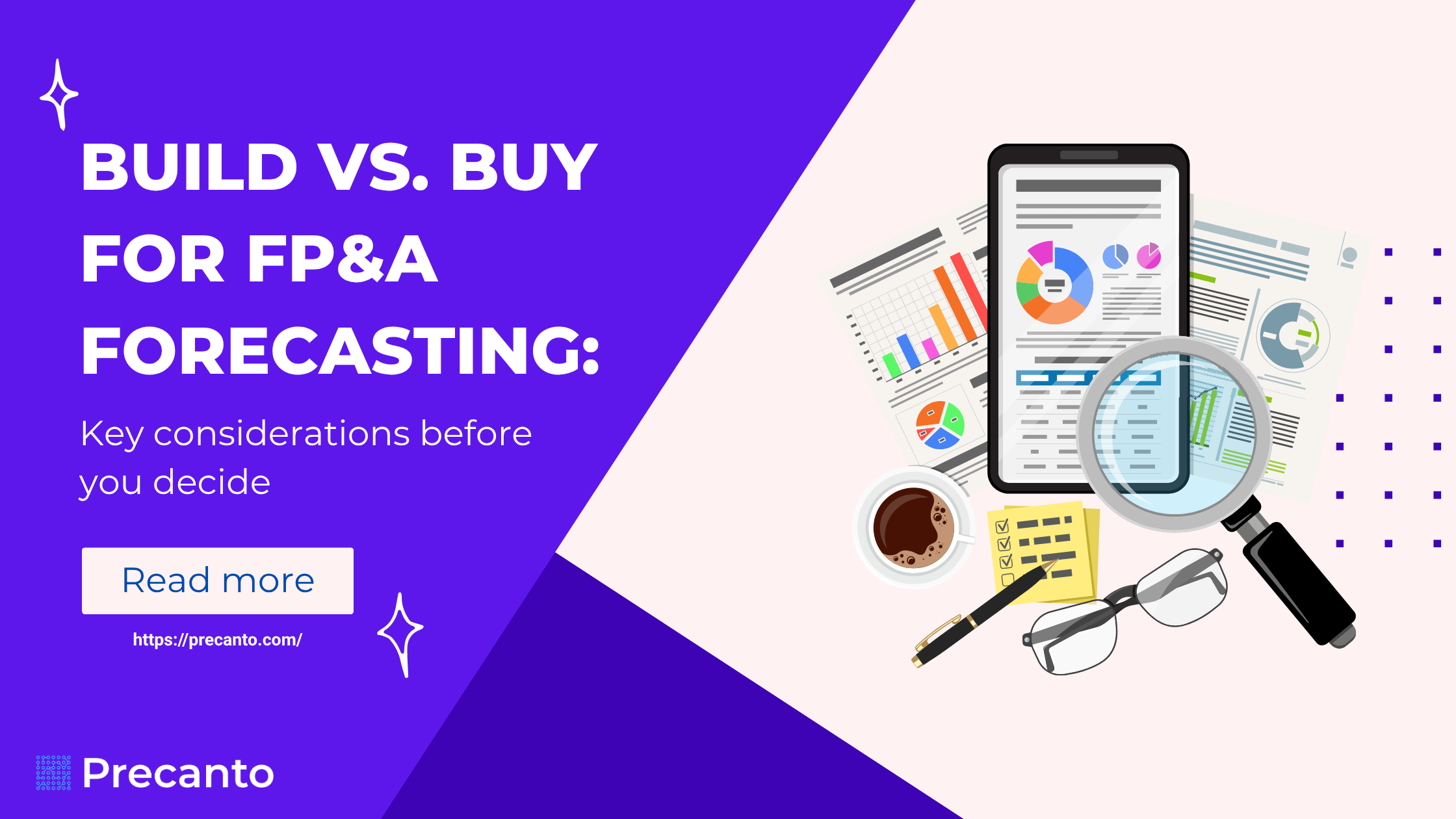
Before deciding whether to build a forecasting solution internally or adopt a ready-made platform, finance and IT leaders should pause to ask a few fundamental questions.
These questions clarify not only cost and effort — but also focus, agility, and long-term sustainability.
If a proven solution exists and can be configured to your needs, replicating it internally often brings limited additional value. Reinventing existing capabilities rarely delivers a better return on investment.
A good litmus test: if the capability isn’t central to your company’s core business or intellectual property, it’s often better to buy.
Build where you differentiate — buy where you can standardize.
Consider time to value, not just time to prototype. Include testing, rollout, change management, and user adoption in your timeline.
AI forecasting demands finance domain knowledge, ML expertise, and secure data architecture. Missing any one of these extends timelines and increases delivery risk.
Internal builds come with ongoing technical debt, retraining needs, and dependency on specific engineers or data owners.
If the original builders move on, continuity can become a serious challenge.
While building an internal forecasting platform may appear cost-efficient at first glance, the total cost of ownership tells a different story.
The initial development investment is only the beginning — most of the expense comes later, through maintenance, model retraining, and the technical debt that accumulates as systems evolve.
The financial outlay for a custom forecasting solution extends well beyond the first release:
Over a three- to five-year horizon, these recurring expenses often exceed the original build cost.
Industry studies show that maintenance alone can consume 40–60 % of total software spend over a product’s lifecycle.
When engineering resources rotate or priorities shift, documentation and model ownership often lag behind.
This creates technical debt — the accumulated complexity of code, workflows, and assumptions that become harder to untangle over time.
Common symptoms include:
The longer the system runs, the higher the maintenance overhead and the greater the risk that forecasts lose accuracy or traceability.
Perhaps the most overlooked cost is context.
IT and data teams bring strong technical capabilities but are not finance practitioners.
They may not instinctively understand the nuances of headcount capitalization, deferred expenses, or period-end adjustments.
As a result:
Bridging this gap requires constant collaboration between finance and engineering — an ongoing coordination cost that can strain already limited resources.
Even when the system works, the operating model behind it often doesn’t.
Because IT teams control data pipelines, access permissions, and model deployment, finance must depend on them for every enhancement or correction.
That dependency creates a bottleneck:
Instead of empowering finance, internal builds can unintentionally centralize control within IT — reducing the flexibility that modern forecasting demands.
Independent research by McKinsey, Bain, and Gartner has found that organizations routinely underestimate the demands of building internal systems.
Across industries, companies misjudge:
In other words, the challenge isn’t just building — it’s maintaining.
Finance teams often underestimate the engineering dependency required to keep internally built tools relevant as data, models, and business assumptions evolve.
“Anything we build will have a maintenance cost in the future that has to be considered. Moreover, the software you are ‘going to build’ always looks better than the software someone else already has—until you hit the limitations.”
— Timothy Campos, CIO, Facebook
“Everybody knows that the more you buy off-the-shelf, the more cost-effective it will be for both implementation and ongoing maintenance.”
— Mark Lutchen, Former Global CIO, PwC
These reflections highlight that building and buying are not purely financial decisions — they’re strategic capacity decisions.
| Criteria | Build In-House | Buy (Established Platform) |
|---|---|---|
| Time to Value | Months to usable output | Weeks to pilot |
| Cost of Ownership | High + continuous maintenance | Lower, predictable subscription |
| Maintenance | Fully internal | Vendor-managed |
| Domain Expertise | Must be built in | Embedded |
| Security & Compliance | Custom framework maintained internally | Vendor-managed, audited controls (enterprise standards) |
| Sustainability | Depends on staff continuity | Independent of turnover |
There’s no one-size-fits-all answer.
But a few guiding questions can help clarify the right path:
For many finance organizations, the optimal path blends both: build for what’s unique, buy for what’s repeatable.
The build vs. buy question isn’t about ownership — it’s about capacity.
In a world where AI models, compliance standards, and data pipelines evolve rapidly, the real differentiator is how fast finance can act on reliable forecasts.
Choosing a platform with mature, vendor-managed security and compliance can often deliver both speed and peace of mind — letting finance leaders focus on outcomes, not infrastructure.
Not sure which path is right for your team? Let’s explore your current setup and see where AI forecasting can accelerate value without a long implementation cycle.
Schedule a demo to learn how Precanto can help your organization.